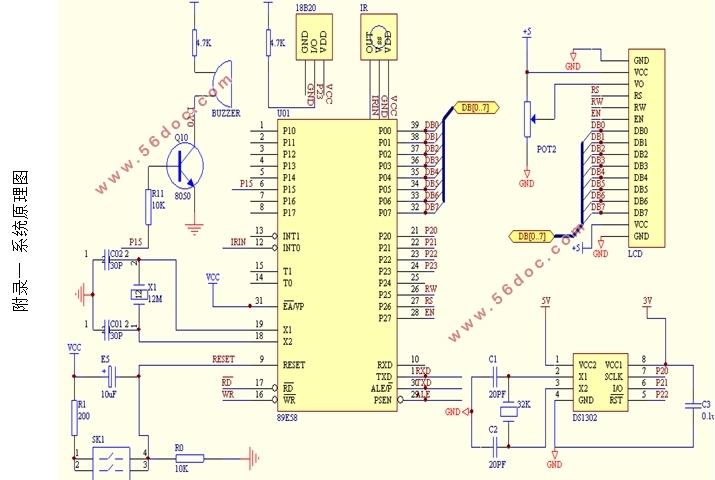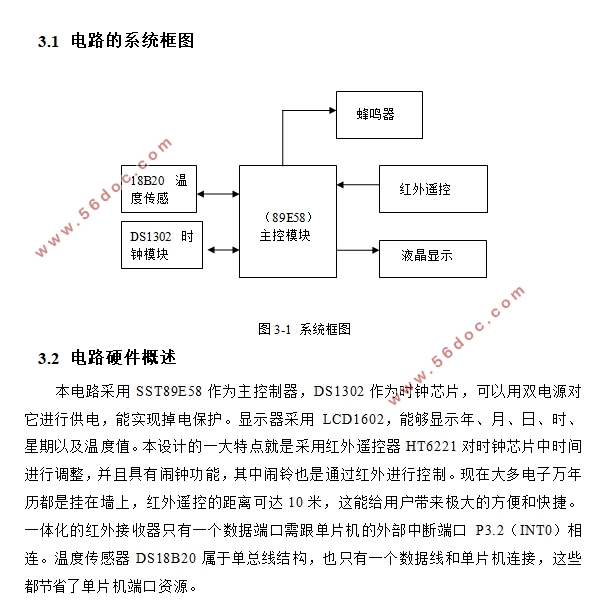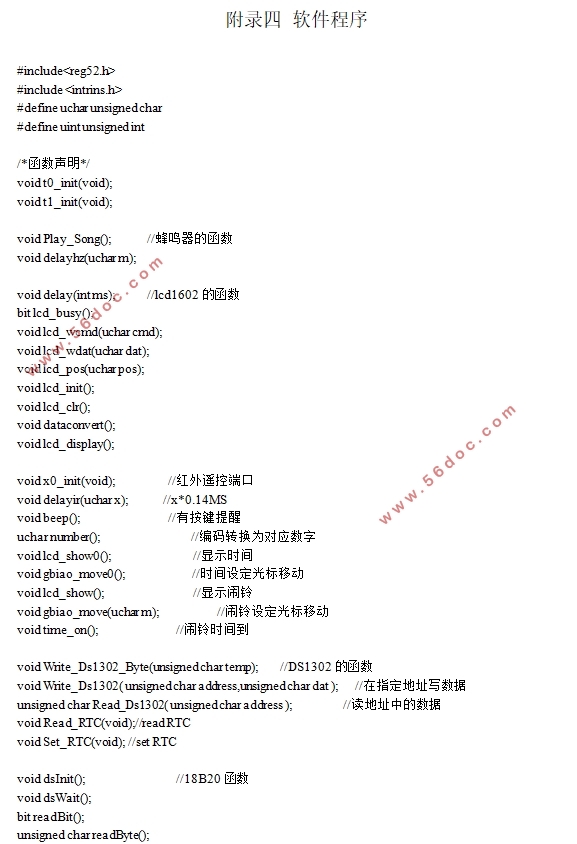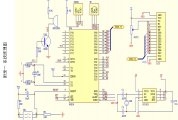基于单片机的万年历设计(论文15000字)
摘要
电子万年历是日常最常用的电子器件,随着社会节奏的加快,人们对时间观念越来越重视。万年历能很好地显示时间和其他人们所需要的基本信息,给人们带来方便和快捷,更好地提高人们的生活质量。
本论文介绍的是基于51单片机为主控制器的万年历设计,能实现显示年、月、日、时、分、秒和星期还有周围温度值,并且可以通过红外遥控器来调整显示的时间,设置和控制闹铃。
由于生活中的大多数电子万年历是挂在墙上,所以使用红外遥控器更方便用户更改时间和控制闹钟。本论文详细介绍了单片机与外围芯片的同步和异步串行通信,液晶显示还有红外遥控器的发送、接收、编码和解码过程。
关键词:万年历;DS1302;18B20;红外遥控
The design of electronic calendar based on microcontroller
ABSTRACT
Electronic calendar is the most popular electronic devices. With the fast pace of society, people take more attention to the concept of time. Electronic calendar can be a good indication of the time and show other basic information people need,and bring convenience and efficiency to people, so that people can improve the quality of their lives.
This paper describes the electronic calendar design based on 51microcontroller, which can show year, month, day, hour, minute, second, and week.What´s more,it can show the temperature aroud. Displayed time can be adjusted by remote infrared control, and another function is that remote infrared control could set up and control the alarm.
Most of the electronic calendars is hanging on the wall in life, so it is more convenient to use the remote infrared control to change the time and alarm clock. This paper tells synchronous and asynchronous serial communication between the MCU and peripheral chips, LCD display and the sending, receiving, encoding and decoding process of infrared remote control.
Keywords: Electronic calendar;DS1302;18B20;remote infrared control



目录
摘要 I
ABSTRACT II
第一章 绪论 1
1.1 电子万年历的国内外研究现状和生产需求状况 1
1.2 电子万年历的设计意义 1
1.3 电子万年历的应用 2
第二章 设计要求和方案论证 3
2.1 设计要求 3
2.1.1 基本要求 3
2.1.2 拓展部分 3
2.2 系统设计方案及其论证 3
2.2.1 单片机型号选择 3
2.2.2 显示模块方案 3
2.2.3 时钟芯片的选择 4
2.2.4 红外遥控模块 4
2.2.5 蜂鸣器选择 4
2.2.6 温度传感器的选择方案 5
2.2.7 电路设计的最终方案 5
第三章 硬件电路的设计 6
3.1 电路的系统框图 6
3.2 电路硬件概述 6
3.3 各个模块的硬件电路设计 6
3.3.1 单片机最小系统设计 6
3.3.2 时钟模块的电路设计 7
3.3.3 显示模块 8
3.3.4 温度传感器模块 9
3.3.5 红外发送/接收模块 10
3.3.6 蜂鸣器模块 12
第四章 系统的软件设计 13
4.1 程序总流程 13
4.1.1 程序流程概述 13
4.1.2 程序流程框图 14
4.2 单元模块软件 15
4.2.1 DS1302时钟模块软件设计 15
4.2.2 LCD1602显示模块软件设计 17
4.2.3 DS18B20温度传感器模块软件设计 20
4.2.4 红外遥控与接收 23
4.2.5 定时中断流程 25
4.2.6 外部中断流程 26
第五章 系统的组装与调试 27
5.1 硬件的组装 27
5.1.1硬件的焊接过程 27
5.1.2硬件的常见故障 27
5.2 软硬件的调试 27
5.2.1 用Keil uVision3调试程序 28
5.2.2 软硬件联合调试 28
第六章 总结与展望 29
6.1 总结 29
6.2 展望 29
致谢 30
参考文献 31
附录一 系统原理图 32
附录二 系统实物图 33
附录三 系统运行界面 34
附录四 软件程序 36
|







